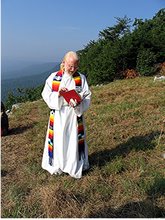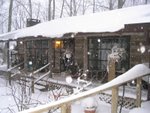THE STRUCTURE OF PERSONALITY FOR THE INNER HEALERS CHAPTER III
The first question someone doing praxis as a psychotherapist or spiritual healer must answer is the question “what is the essential structure of personality?” As discussed in the previous chapter, a personality theorists tend to divide approaches into two models: In his discussion of personality, Rychlak divided personality theories into reactive and proactive models. Reactive models are represented by the laboratory theorists, such as the Behaviorist. They try to capture the structure of personalty as an effect. The personality structure is something built up from environmental inputs. On the other hand, proactive models tend to come from those who do praxis. The phenomenologists, for example, who see the personality as cause. The personality is a proactive, a priori entity that acts upon the environmental inputs.
The spirit
Sanford (1958), has taken a strong proactive stance in her structural constructs especially the spirit. The spirit is that part of us a priori from our beginning. Our spirit is that which was originally breathed by God into every human (Gen. 2:7)–the light that is in the world by which the world was created (John 1:9-10). The spirit, enfolds the other two parts of the personality structure, the conscious and the subconscious.
The conscious mind
The second structure is the conscious mind which she equates with the cognitive processes–the reasoning capacities of the individual. She describes the conscious mind as that which allows us to cooperate with God in a reasonable manner.
The subconscious
Her third structure, the subconscious, is a more complicated construction which Sanford does not always use in a consistent manner. For that reason it will be discussed in the next chapter. Sometimes subconscious merely means anything which is not conscious. At other times, she uses the term to indicate the process of storing memories. At still other times, she uses the term to indicate something similar to Cannon’s “wisdom of the body,” that is, an inherent bodily knowledge of what is good for the organism.
For example, in speaking of the subconscious as a process of memory storage, Sanford writes: Now let us come to the most important point concerning the action of the subconscious, that faithful servant stores away all the memories in neat files, permits the conscious mind to forget many of them, and produces them as needed. . . . all of the memories except those of fear, anger, pain, and guilt. (concerning these latter memories) the subconscious mind is like a careful housekeeper who will not put away dirty clothes or dishes, but insists in keeping them in plain sight until they are cleaned. (p. 66)
When she used the term subconscious to mean an inherent bodily wisdom, she wrote: “(There is ) a hidden engineer within our bodies, placed there by God to see that we. . . .(get through life). The subconscious engineer acts under a blanket order from God. . . .There is also a captain in our heads: the conscious mind, which enables us to cooperate with God in a reasonable way.
The engineer within the body cannot read the captain’s mind. The subconscious mind does not respond to reason, but only to suggestion. Every time we think, “Oh dear, I’m afraid I’m catching cold,” the subconscious mind picks up the suggestion, “Catch a cold,” (and we catch one) (Sanford, 1972, p. 31)
To summarize her meaning of the subconscious, first the subconscious functions to store memories, filing them away in a special type of psychic filling system that sorts and files the positive and the neutral experiences. The subconscious resists storing negative experiences. Second, there is a process which works correctly if not interfered with, but which concretely follows suggestions from both the spirit and from the conscious mind.
Thursday, June 28, 2012
THE STRUCTURE OF PERSONALITY FOR THE INNER HEALERS CHAPTER III
Posted by
Blogger
at
5:52 PM
![]()
Labels: Agnes Sanford, Inner Healers, Inner Healing, John Sanford, Psychology and Religion
Subscribe to:
Post Comments (Atom)





0 comments:
Post a Comment